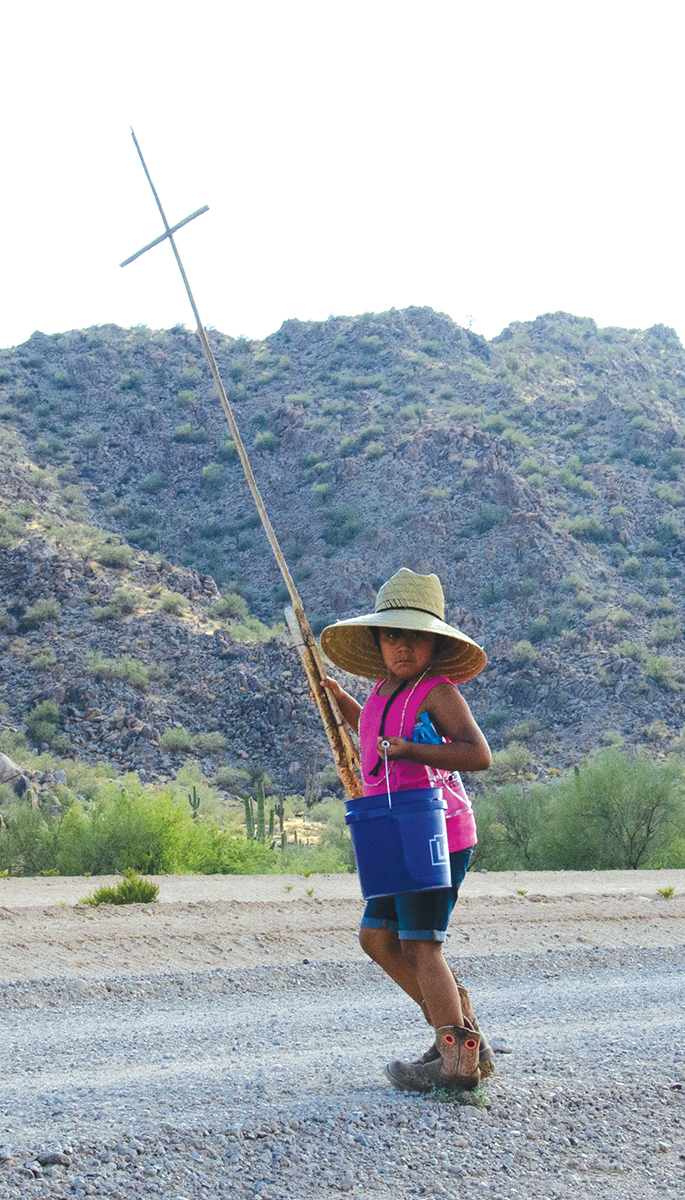VIEWS: 3854
July 18, 2019The Annual Baidaj Harvest
June marked the O’odham New Year, and the month is also known as the time of hasan baidaj masad (the ripening of the saguaro cactus fruit). Ancestors have harvested baidaj for thousands of years. This tradition is celebrated by all the sister tribes: the Salt River Indian Community, Gila River Indian Community, Tohono O’odham Nation and the Ak-Chin Indian Community.
The baidaj starts growing during the spring. The buds, green in color, grow large in clusters on top of the saguaro cactus. When summer starts, the fruit is red and ripe, ready to be eaten.
The baidaj is harvested using gathering sticks known as kui:pud, used to knock the fruit from the top of the cactus. The kui:pud is made from the ribs of old saguaro cacti, usually ones that have already fallen down and dried up. Pliers are used to attach a small piece of rib to the longer rib piece, creating a tall cross. This gives the rib some grip to pluck harder-to-reach fruit from the top of the cacti.
Groups of people gathered in Gila River District 1 Blackwater near the riverbed to camp for the harvest, which lasted two days. For many people, it was their first time. The unity of the Community showed as people with trucks offered to haul everyone to the site while others packed coolers with food and water to share.
When choosing which fruit to pick, it is best to look for ones that are red, which usually means they are ripe and juicy. Be wary of some that are split open already—the birds have been eating them. This fruit gives animals the water and nutrition they need to survive the desert heat. Be careful of the spines still on the fruit. Teamwork is used as one person pulls the fruit down while another person has a knife and bucket ready to go. They slice open the fruit open and scrape the seedy (juñ/seeds) red insides into the bucket. The empty fruit pods are placed on the ground to bring back the rain.
After the baidaj was collected, everyone was welcomed to the District 1 Multipurpose Center, where volunteer cooks fed the harvesters. Back at the campsite, a fire was made to cook and strain the baidaj.
The possibilities are limitless with this fruit. It makes a jam to spread across bread. It can be cooked and thickened into a syrup (sitol) that can be poured on mesquite-flour pancakes. The most important tradition, however, is the saguaro wine, called na:we. This wine is created by boiling the fruit using a technique perfected over generations. The na:we is used in ceremonies to pray for good rainfall so the desert can flourish for another year. This wine is also used to etch shells. Everyone went home with small mason jars full of jam and syrup.
For the O’odham, the baidaj sets the stage for good rain throughout the year. The picking of the baidaj fruit is a time for people to come together to harvest and most of all to continue tradition.









